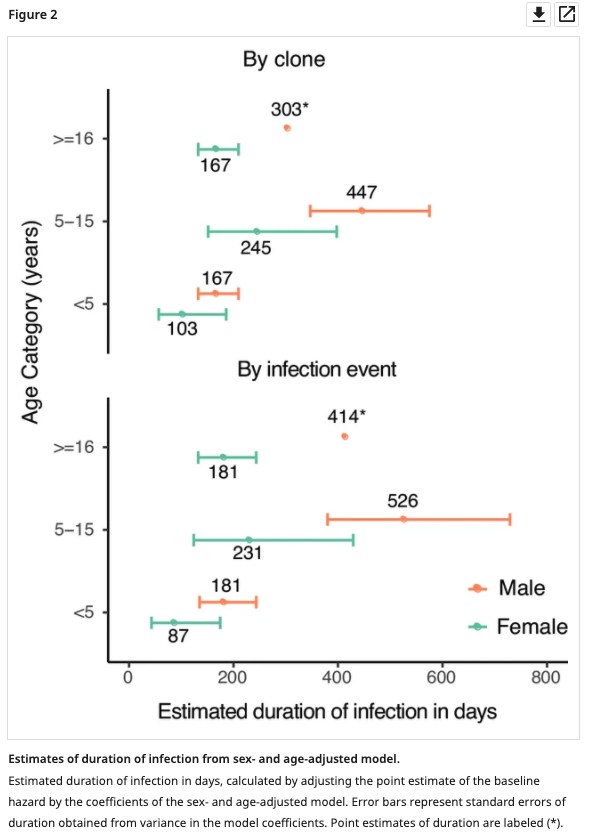Our paper on sex-based differences in the clearance of asymptomatic P falciparum infection is out!! We found that females cleared these infections ~2x faster than males in our cohort in Uganda. @eLife (1/N) https://elifesciences.org/articles/59872 ">https://elifesciences.org/articles/...
We know that pregnant women are at higher risk of malaria infection + severe disease; but male bias in prevalence is reported after puberty in many studies. Why? It& #39;s often assumed it& #39;s due to behavioral risk factors for infxn (work, sleeping outside) (2/N)
But prevalence = incidence x duration. What if it& #39;s not a difference in inc, but a difference in duration? Hard question to answer in malaria, where a person can be 1) asymptomatically infected & 2) superinfected (get a new infection while having an old infxn) (3/N)
To sort this out we had to do qPCR monthly to detect infection, then genotype the parasites in the blood to track infections over time in individuals, enabling us to calculate the duration of chronic infxns and see when new infxns occurred. (4/N) (thx @noamteyssier 4 the gif)
Polyclonal infections can occur due to co-infection (one mosquito bite transmitting multiple clones) or superinfection (multiple bites), so we analyzed the data both by infection event (grouping clones together) or by clone (counting each clone as a separate infection).
We found no difference between males & females in the "force of infection," or new bloodstage infections detected. That said, there were very few new infections (and malaria eps!) overall; this study was conducted in an area s/p 5 rounds of indoor residual spraying. (5/N).
After adjusting for "baseline" infxns, age, gender, and parasite density, we found that females cleared their asymptomatic, untreated infections faster than males ((HR = 1.82, 95% CI 1.20 to 2.75 by clone and HR = 2.07, 95% CI 1.24 to 3.47 by infxn event)! (6/N)
We also estimated duration of infection using an age- and sex-adjusted model and found that school-aged males were estimated to have the longest infections overall (7/N)
There is a lot more to learn; we did not detect an interaction between age/sex in the model, but if hormonal changes 2/2 puberty are hypothesized to be driving this sex difference, we would expect to see a larger effect after puberty. Long discussion of this in the paper (8/N)
There are some caveats to our findings (like all findings!) but overall we are convinced that in our cohort -- where malaria incidence had been very high and was driven very low by indoor residual spraying -- there is a sex-based difference in clearance of asymp. infxn (9/N)
Asymptomatic infections matter because we know that they contribute to ongoing transmission; characterizing this parasite reservoir will help us target these infections as we work toward elimination. (10/N)
@bgreenhouse1, @isabelrodbar, @sakitakahashi1, @prasannaj77 and all of us at @EPPIcenter_UCSF are working to understand the biological explanations for these sex-based differences in malaria immunity via the MUSICAL study & hope others are likewise motivated (fin!)

 Read on Twitter
Read on Twitter



